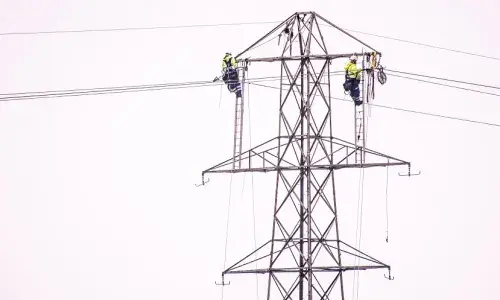
How we locate new substations
Across England and Wales, large-scale generation and demand projects must connect to the electricity transmission network via a substation. When existing substations can’t be extended, don’t have spare capacity, or are reaching the end of their asset life, a new substation may be required.
Before confirming a location, we carry out an options identification and site selection process. This considers a number of strategic options in line with the demonstrated needs case and in accordance with National Grid’s ‘Approach to Consenting’ guidelines, which outlines the project development process for major infrastructure projects including substations.
We consider the wider network and customer requirements, and ensure these are balanced against technical requirements, cost and environmental effects. The site selection process is documented in a ‘Siting Study’.
When are siting studies triggered?
Siting Studies are triggered once a project is confirmed as “ready” and has passed through the National Energy System Operator (NESO) Gate 2 checks, ensuring we focus on viable, deliverable developments.
This change enables us to:
- Prioritise the right projects
- Reduce delays and uncertainty
- Plan the network more economically and efficiently.
What we consider in siting studies
Location
- The site selection process will consider a wide range of locational criteria such as:
- Proximity to existing grid infrastructure, reducing the need for additional overhead lines.
- Access, during operation, construction and for abnormal indivisible loads (AIL).
- Topography, (e.g. substations cannot be built on very steep slopes).
- Geographical location e.g. alternative solutions may be required for coastal locations.
- Distance from residential areas.
Future demand
We plan for growth. Sites may need room for expansion or to host Grid Supply Points that feed local distribution networks.
Environmental, cultural and visual
There are several guidelines we adhere to during siting studies, including the Horlock Rules. These rules guide the siting and design of substations and related infrastructure, as well as help National Grid meet its duties under Schedule 9 of the Electricity Act 1989. They aim to:
- Minimise visual impact of our assets though careful site selection and screening.
- Avoid areas of highest amenity, cultural, scientific, or environmental value.
- Protect important habitats like ancient woodland and water sources.
- Minimise environmental effects.
- Provide appropriate mitigation measures and minimise adverse effects.
Learn more about our environmental and biodiversity net gain commitments in our development activities.
We work closely with our Electricity Transmission Land and Property team to secure the necessary land rights.
Community consultation is a key part of the planning process. Local stakeholders are engaged early, and consulted during the planning process, providing an opportunity for the community to raise questions or concerns.
For more information on different asset configurations, read our article on the different types of substations we have on our networks.


